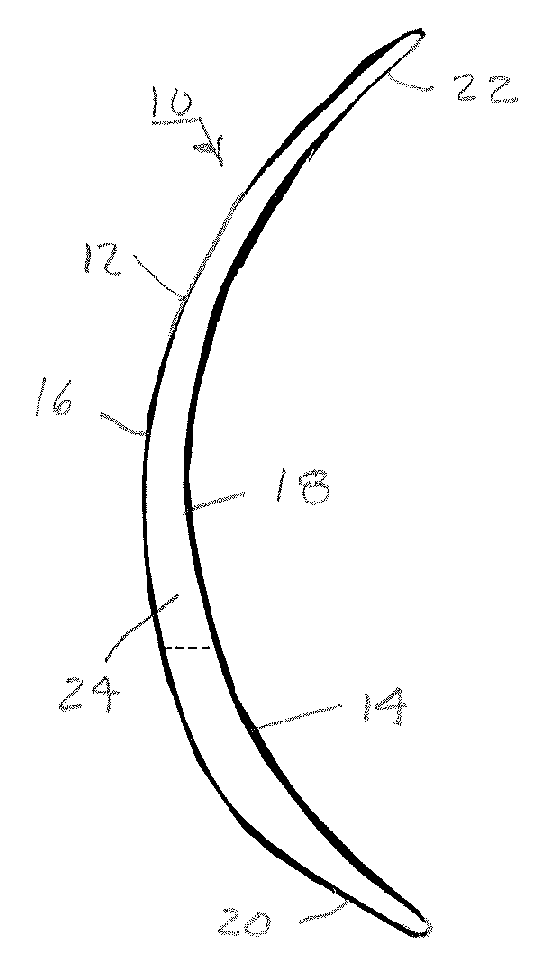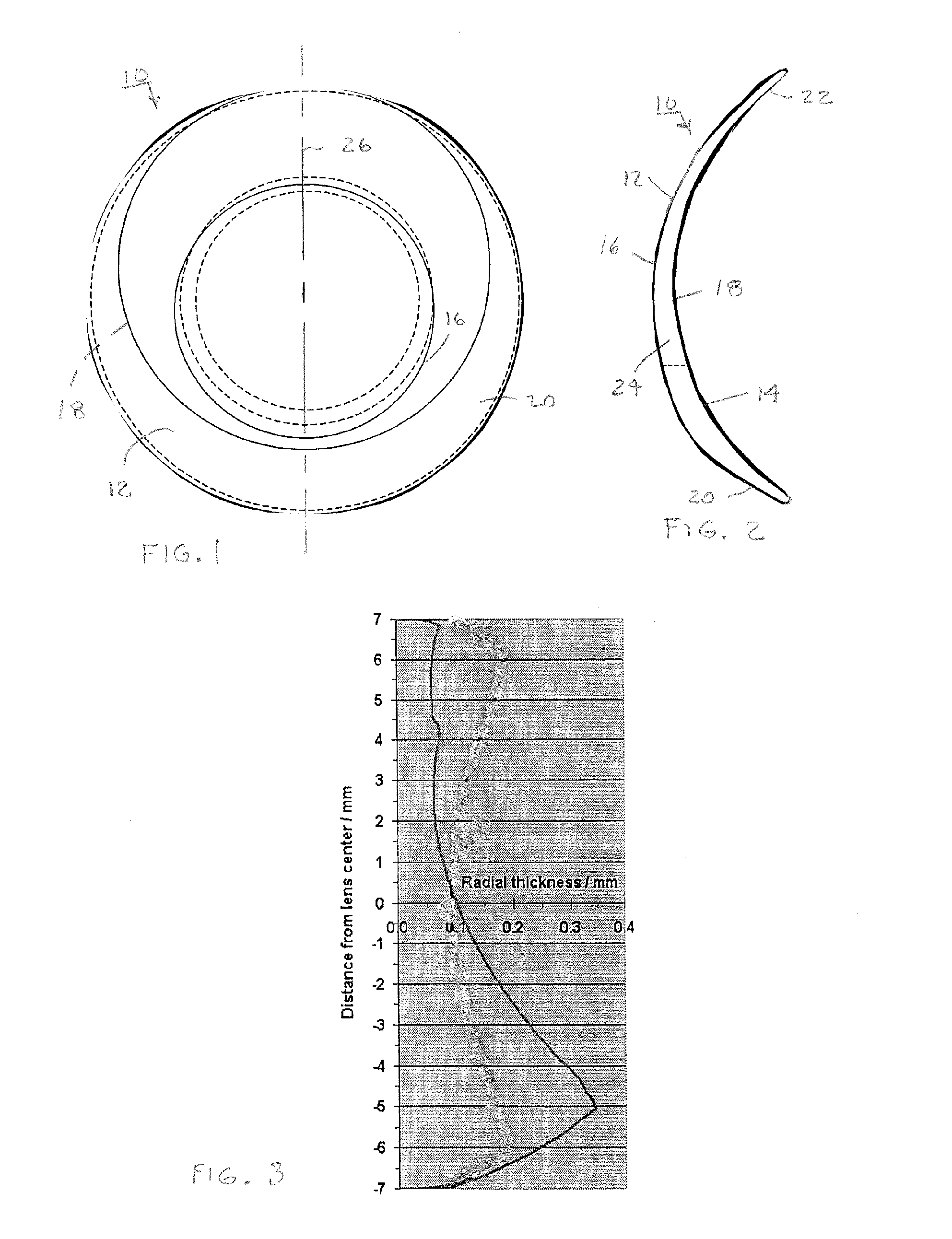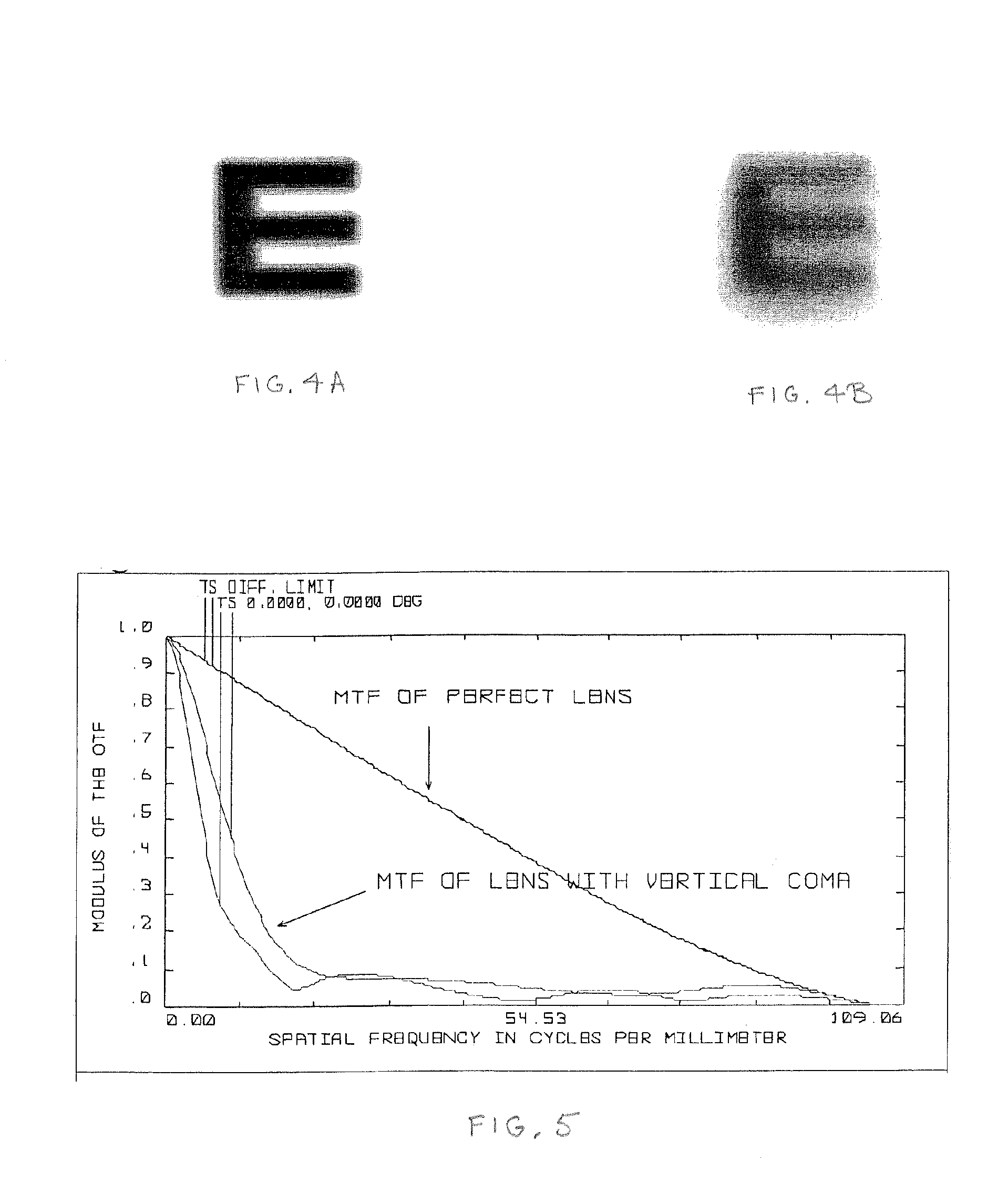Contact lens with high-order compensation for non-axisymmetric structure
a compensation and non-axisymmetric technology, applied in the field of contact lenses and other ophthalmic biomedical devices, can solve the problems of reducing imaging performance, reducing imaging performance, and prone to higher-order aberrations in thickness variation, and achieve the effect of improving imaging performan
- Summary
- Abstract
- Description
- Claims
- Application Information
AI Technical Summary
Benefits of technology
Problems solved by technology
Method used
Image
Examples
Embodiment Construction
[0025]Multifocal and toric contact lenses are among the types of contact lenses requiring an associated angular orientation to function as designed. Such angularly sensitive contact lenses are typically formed with some type of ballast to favor a particular orientation of the lenses on wearers' eyes. The ballast sets a neutral angular orientation of the lenses; and angularly sensitive prescriptions, such as the angular orientation of cylindrical axes for fitting astigmatism, are referenced with respect to this neutral orientation.
[0026]Typically, the lenses are made with a thickness variation along a so-called ballast axis, which sets the neutral orientation of the lenses. As shown in FIGS. 1 and 2, the thickness variation of a typical toric lens 10 can be achieved by relatively vertically offsetting anterior lens surface 12 with respect to posterior lens surface 14. The offset affects the central zones 16 and 18 of the anterior and posterior lens surfaces 12 and 14 as well as their...
PUM
 Login to View More
Login to View More Abstract
Description
Claims
Application Information
 Login to View More
Login to View More - R&D
- Intellectual Property
- Life Sciences
- Materials
- Tech Scout
- Unparalleled Data Quality
- Higher Quality Content
- 60% Fewer Hallucinations
Browse by: Latest US Patents, China's latest patents, Technical Efficacy Thesaurus, Application Domain, Technology Topic, Popular Technical Reports.
© 2025 PatSnap. All rights reserved.Legal|Privacy policy|Modern Slavery Act Transparency Statement|Sitemap|About US| Contact US: help@patsnap.com



